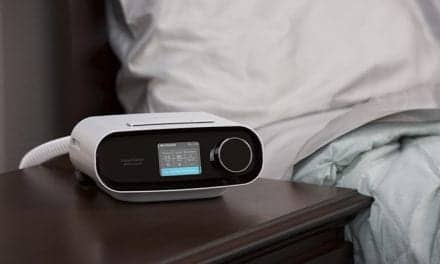A new study found that certain oxygen saturation parameters were improved by one dose of sleep apnea treatment CX1739, but findings also showed a reduced sleep time during the night following drug treatment. Moreover, CX1739 did not reduce the mean apnea/hypopnea index (AHI).
The study enrolled 20 relatively healthy adults with moderate-to-severe obstructive sleep apnea; 16 were administered a single oral dose of CX1739 and four received matching placebo for 1 night. The objective of the study was to further explore safety and tolerability in the sleep apnea population, as well as to assess putative efficacy of CX1739 on a range of sleep apnea parameters assessed by overnight polysomnography.
“A single dose of CX1739 improved a number of sleep apnea parameters across most of the 16 subjects who were given the drug, and there were some CX1739-treated subjects who demonstrated a robust reduction in sleep apnea symptoms,” said Mark Varney, PhD, president and CEO of Cortex, developer of the drug. “We may find that repeated daily treatment with CX1739 for several weeks may provide additional benefit over a single dose and improve sleep apnea symptoms in those subjects who did not respond after a single dose. Additionally, testing this drug in a population that suffers from predominantly central apneas also appears to hold some potential for Cortex.”
The study demonstrated that selected oxygen saturation parameters were statistically improved by one dose of CX1739, but the interpretation of these results was complicated by a reduced sleep time during the night following drug treatment. CX1739 did not reduce the mean apnea/hypopnea index (frequency of apnea or hypopnea events per hour of sleep). However, in the AHI responder analysis, defined as a greater than 40% reduction in the AHI, three subjects (20%) in the CX1739 treatment group were responders, and there were no responders in the placebo group. Furthermore, CX1739 significantly (p<0.05) reduced the apnea/hypopnea time (AHT; cumulative time of all apneas and hypopneas over the night) between the baseline and the treatment night by an average of 21 min, compared to an increase of 12 min in the placebo group. In the AHT responder analysis, defined as a greater than 40% reduction in the AHT, five subjects (30%) in the drug treatment group were responders, with no AHT responders in the placebo group.
There were also statistically significant improvements in a number of blood oxygenation measurements: mean blood oxygen saturation was increased (p<0.01); minimum blood oxygen saturation was increased (p < 0.001); there was a reduction in the total time that blood oxygen saturation was reduced below 90% (p<0.01); and a reduction of the number of times per hour of sleep time that the blood oxygen saturation went below 90% (p<0.05).
Sleep efficiency, the percent of time asleep while in bed for the 8-hour session, was significantly (p<0.001) reduced by about 20% after administration of CX1739, although the level of daytime sleepiness, determined by the Clinical Global Impressions Daytime Vigilance test given the morning following treatment, was unaffected by CX1739.
CX1739 was safe, but the dose appeared to be near the limits of tolerability when administered just before bedtime to this moderately overweight (mean BMI >31), middle-aged (~50 yrs) group of sleep apnea subjects. There were no serious adverse events and no clinically relevant changes in vital signs, cardiovascular, or other safety assessments. Adverse events were generally mild to moderate and no new unexpected adverse events were seen.
The single center study was a double-blind, placebo-controlled design. Subjects who met inclusion/exclusion and other eligibility criteria were screened for sleep apnea severity by polysomnography during an overnight stay in the clinic sleep laboratory. Acceptable subjects returned for a second overnight polysomnography session, and those subjects who met certain consistency criteria on key sleep apnea parameters between screening and baseline polysomnogram nights were enrolled and returned to the sleep clinic for a third overnight polysomnography session when they randomly received a single dose of either CX1739 (900 mg) or matching placebo capsules in a four to one ratio just prior to the beginning of the sleep session.
The principal investigator of the study, Adrian J. Williams, FRCP, professor of sleep medicine at King’s College, London, said, “The results from this pilot study are encouraging, and warrant undertaking a larger clinical study to better understand the sleep apnea patient population most responsive to the treatment of CX1739.”



